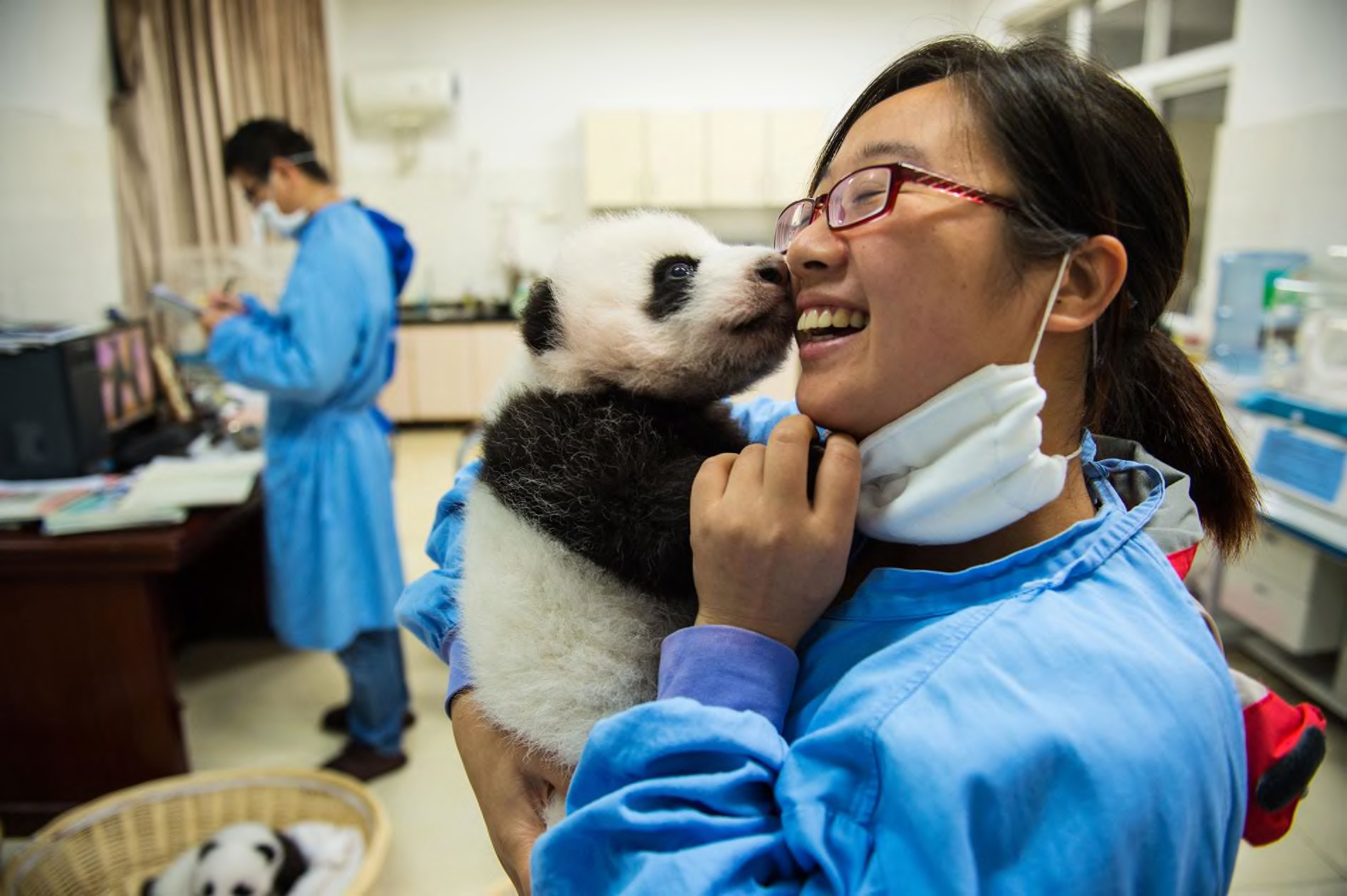- Inspiring People -
- 6mins -
- 735 views
China’s Giant Panda Rewilding Program is like ‘Big Brother’ for these adorable bears
At ‘Panda Valley’, almost 150 cameras constantly monitor the panda equivalent of preschool as cubs learn how to pick the best bamboo, mothers chase off predators, and they learn to climb.
Raising cute pandas is complicated
During the last 20 years, China has successfully tackled three of the biggest problems holding the giant panda back. Through research and experimentation, researchers at China’s breeding centers have discovered how to encourage captive pandas to mate, how to make sure the pregnancy is successful, and how to keep the panda cubs alive once they’ve been born.
China’s dedication to panda research is leading the rest of the world in panda conservation
Through research and experimentation spanning 20 years, researchers at China’s breeding centers have discovered how to encourage captive pandas to mate, how to make sure the pregnancy is successful, and how to keep the panda cubs alive once they’ve been born.
Regards mating, they found that offering the females a choice of mate as well as enriching panda diets leads to a better chance of successful mating.
A panda pregnancy can range from 73 days to 324 days depending on the weight of the mother panda and conditions she experiences during pregnancy. This knowledge, backed by medical advancements in artificial insemination, has allowed for more successful pregnancies in captive pandas.
Pandas often give birth to twins, and mothers usually choose to nurture only the stronger cub, resulting in the other twin’s death. Panda keepers have found a way to save this cub by "sharing custody."
Periodically, the keepers will swap out the infants, caring for one themselves while the other is with the mother. This way, every cub has a chance to survive.
When in human care, the keepers must frequently massage the gut of the cub to help stimulate bowel movements—as infant pandas are unable to defecate without assistance.
All of these factors have led to the spike in the panda’s survival rates. More recently, the China Conservation and Research Center for the Giant Panda has made another breakthrough: It’s the only center in the world to successfully breed pandas and then release them into the wild.
Five pandas have been released since 2006, though two have died. Before release, the pandas must go through a series of trials meant to test their abilities to survive in the wild, while avoiding human interference as much as possible. China’s dedication to panda research is leading the rest of the globe in panda conservation.
Scroll down for some of the cutest panda cub pictures you’ve ever seen.
Source: NationalGeographic










Pandas are a Vulnerable Species With Less than 2,000 in the Wild
According to the census of 2014, there are only 1,864 giant pandas alive in the wild. It is one of the rarest and most endangered species in the world, thus the giant panda was selected and used as the symbol of the WWF since its formation in 1961.
- Chinese: ‘big bear-cat’ (大熊猫, dàxióngmāo /dah-sshyong-maow/)
- Class: mammal (Mammalia)
- Order: carnivore (carnivora)
- Family: bear (Ursidae)
- Genus: cat-foot (Ailuropoda)
- Species: black-and-white (melanoleuca)
- Size: up to 0.75 meter tall, 1.5 meters long (2.5 feet tall, 5 feet long)
- Weight: up to 150 kilograms (330 pounds)
- Life span: 15 to 20 years in the wild (up to 30 years in captivity)
- Reproduction: one cub per 2 years; mating occurs in spring and a cub is born in late summer.
- Here’s one fact that you may not have noticed before. Guess what color their tail is? It’s white!
- Also see 13 Interesting Facts on Giant Pandas
Source: ChinaHighlights.com

